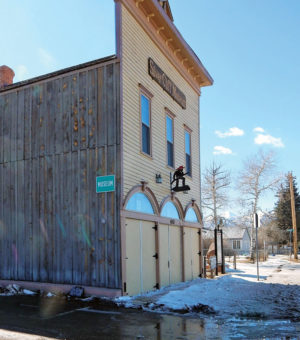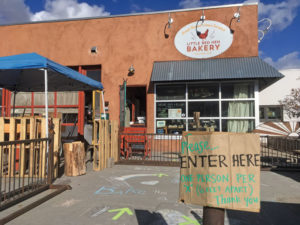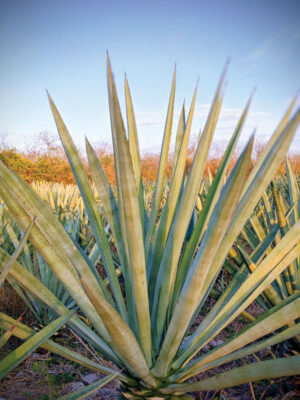By Doris Dembowsky
There’s nothing like a museum for allowing parents and grandparents to reminisce. Walking from room to room, you’ll hear them saying, “I remember when ….” Those reminiscences wrap adults in warm family stories. As for historically challenged youth, they’re wide-eyed, looking at life as it was before TV and computers.
The Silver Cliff Museum is housed in the original Silver Cliff Town Hall and Fire House at 610 Main Street, Silver Cliff. As the town’s name suggests, it was built close to the silver mines.
In 1878, J.R. Edwards noted some dark, greasy rock just north of the present town. Much to Edward’s surprise, after heating the tinfoil-like layers sandwiched between the strata, it was assayed to be 75% silver. And the rush was on.
The town of Silver Cliff was incorporated six months later, and that same year, the two-story fire house/town hall was built. In another two years, A.A. Hayes wrote that Silver Cliff was “joyous but lawless” and suffered from “rowdyism, violence, and ruffianism involving revolvers and Bowie knives.”
Given that the miners’ haphazard housing was built cheek-by-jowl, it was essential to have trained fire fighters. The threat of fire was only one match away. Typically, unseasoned, pine boards ran vertically with the cracks battened with melted feather down and flattened tin cans. One fire in 1880 and another in 1882 nearly burned the town to ground.
 Firefighting equipment housed in the museum is a big draw. On display beneath a large, 44-star American flag wide enough to span Main Street, an original 1879 Hook and Ladder wagon takes a place of pride. Bought for the princely sum of $999, the wagon was state of the art.
Firefighting equipment housed in the museum is a big draw. On display beneath a large, 44-star American flag wide enough to span Main Street, an original 1879 Hook and Ladder wagon takes a place of pride. Bought for the princely sum of $999, the wagon was state of the art.
Boasting its original red paint, the wagon, with its hand painted gold leaf swans and dragons, is stunning. Speculation has it that the unusual swan and dragon motifs painted on the wagon’s side were influenced by Lew Key, the town’s esteemed owner of the Chinese laundry.
The hook worked in tandem with the ladder. Houses were built with rings high on the walls. In case of fire, the firemen inserted the hooks in those rings and quickly brought the walls down. Given that fires were a constant threat, Silver Cliff had two hook and ladder teams plus two hose-cart teams.
The 1885 state competition was held in Colorado Springs, where the George B. McAulay Hose team, “The Little Giants of Custer County,” took first prize. The team pulled the hose cart 500 feet, laid 200 feet of hose, and had water through the hose in 34.5 seconds! A second, statewide win, saw the “Little Giants” taking first place at Cañon City’s Fruit Day in 1895.
Downstairs, the museum showcases the town’s firefighting, ranching, mining, and commercial history. Tear yourself away from the firefighting section and take a look at the other exhibits.
An extensive mineral display will keep rock-hounds busy as will the mastodon tooth “not fewer than 25,000 years old.”
The miner’s lunchbox is intriguing. Beans, bread, potatoes, and cabbage fed the miners during their 12-hour shifts.
The bank’s brass tellers’ cages dazzle. As does the ballot box used in the Colorado State Election to decide whether Leadville, Denver or Silver Cliff would be chosen state Capitol.
In the 1880 Census, the population of Silver Cliff was 5,087. One enthusiastic editor wrote: “The State Capitol is coming to Silver Cliff. The national capitol will doubtless remain in Washington for some time, but look out Denver!”
Rumor has always had it that Silver Cliff lost out to Denver by just one vote. Quoting the Denver Times: Silver Cliff wouldn’t have lost, but “Denver voted Indians, tombstones, and prairie dogs.”
Climb the stairs to a period house setting, and you’ll see the domestic side of life in kitchen, parlor, bedroom, and music room settings.
I love the portable clothes washing machine. Imagine, instead of washing dirty clothes by hand, you could put the laundry in a tub, and by turning a handle, rotate the clothes inside a drum.
The bear skin coat as well as an un-tanned cowhide coat caught my eye, and I wanted to try on the historical, women’s clothing
Administered by the Town Board of Silver Cliff, the museum typically opens on Memorial Day. This year, however, the museum will open after the pandemic passes. There is no charge for visiting the museum; however, donations are always welcome. Private tours can also be arranged.
Should you have questions, please call co-curators Dorothy Urban at 719-783-2615 or Marty Wolff at 719-371-6924.
GETTING THERE: The museum is located on Main Street in Silver Cliff which is also Colo. Hwy. 96. From Westcliffe, turn east off Colo. Hwy. 69. From Wetmore, drive west on 96 to Silver Cliff. ?
Doris Dembosky, a Westcliffe poet, counts any week a “good week” if she doesn’t leave town to go down the mountain.
Her blog can be found at:



